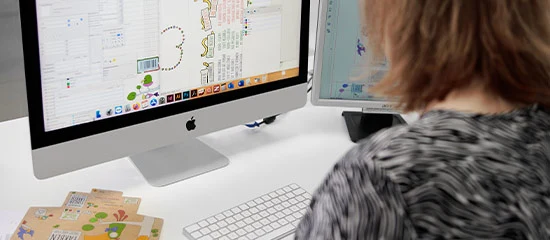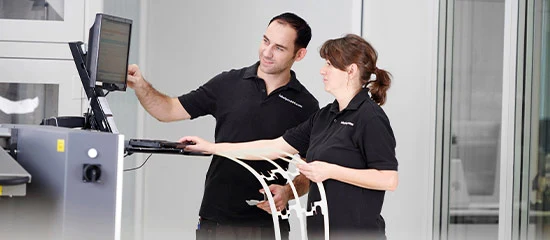
Technical terms explained: Packing aids
Packaging aids are materials that serve to secure the packaged goods or also to improve the stability of a package. These include, for example, adhesive tapes for sealing a carton or buffer and filling materials such as bubble wrap for protecting the packaged goods.
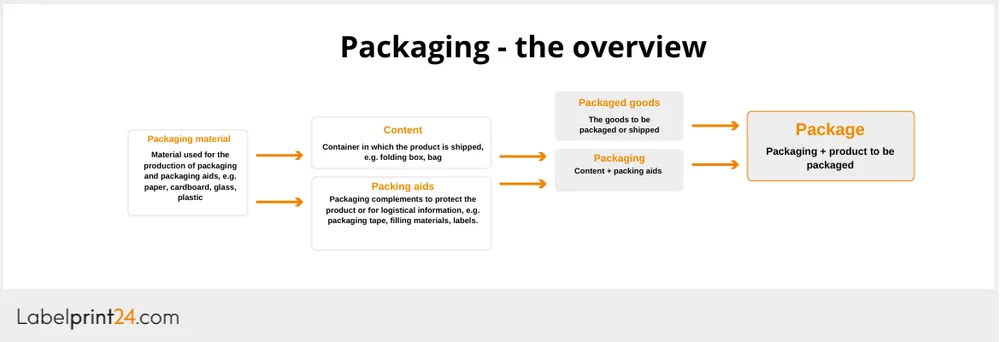
What exactly are packaging aids?
According to DIN 55405, section 4, subsection 4.4.2, packaging aids belong directly to packaging. Accordingly, the term "packaging aids" includes all materials that make possible or increase the strength and stability of the packaging. In addition, these products can also form the closure of printed packaging.
Examples of types and variants of packaging aids:
- Holding the packaging together: adhesive tapes, strapping, stapling tapes, etc.
- Sealing: Clip closures, corks, etc.
- Additional protection of the packaged goods: air cushion pads, desiccants, foam wood wool, protective agents or specific components such as an aroma barrier or aroma protection valve, etc.
- Notes and markings: Packaging sleeves, seals, labels, etc.
The most important functions of packaging aids
In order to offer packaged goods the best possible protection during transport and storage, manufacturers use supplementary or supporting packaging aids in addition to suitable packaging materials.
The functions listed above clearly show how versatile the various packaging aids can be used.
For example, certain packaging aids can provide additional protection for the goods, while other solutions support the sales-oriented appearance, are used as closures or are responsible for the labelling of the products.
Thanks to this versatility, packaging aids are a good option for establishing supplementary protection in the form of an additional security function for primary, secondary or tertiary packaging. This can optimise the entire packaging process and also increase sales success.
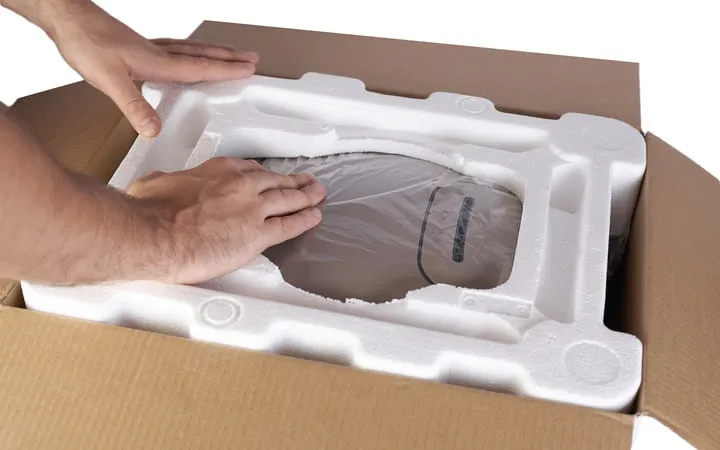

Product Advisor for Shipping Boxes
Whether it’s a simple folding box or a maxi letter box with adhesive strips – I’m your advisor for shipping boxes made from corrugated cardboard. Our printed packaging and inlays provide protection for products across almost all industries.
"Security and design? Corrugated cardboard offers both!"
I will be happy to help you personally.
A brief portrait of the most important functions
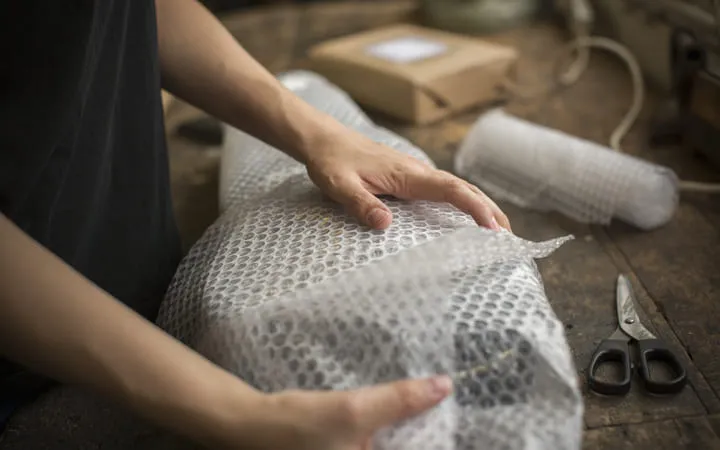
Safety and protective function
In this respect, packaging aids have the task of protecting the goods inside the packaging during storage and delivery or transport in addition to the packaging material. The main objective of the securing and protective function in this case is to prevent possible damage to the packaged goods due to external force and pressure, such as impacts, blows or crushing.
If packaging aids with a corresponding securing function are required, adhesive tapes or edge protection solutions are primarily used. In this respect, filling materials also count as packaging aids with a securing and protective function. Here, materials such as paper, padding and air cushions ensure the safety and protection of the goods inside the packaging. This makes it impossible for the packaged goods to slip or become jammed.
Advertising and labelling function
Packaging aids also play an important role in marketing and classic advertising. Packaging aids, such as printed packaging sleeves or labels, ensure an appealing presentation of the respective products.
Used appropriately and visually designed for specific brands or products, they can serve as eye-catchers or visually accentuate certain characteristics of the goods.
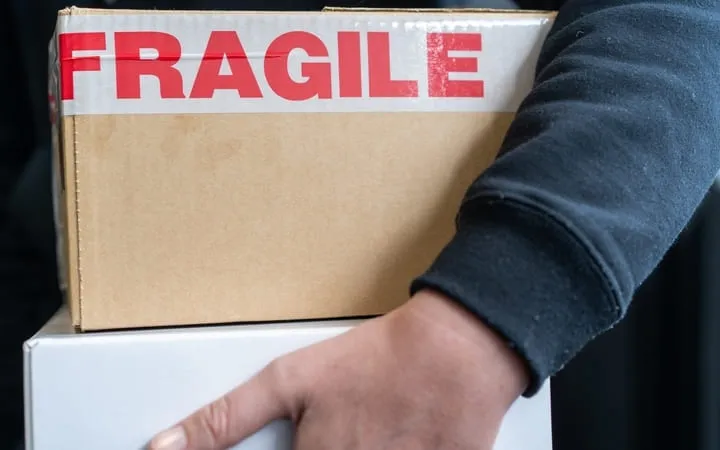
At the same time, the respective packaging aids function as information carriers for consumers as well as an instrument for advertising purposes.
Labels and similar packaging aids are also frequently used in the context of quality assurance. Labels can be used to mark inspected packages or seal closure areas. This excludes the possibility of tampering, as the seal ensures that re-opening does not go unnoticed.
Materials and technologies in handling packaging aids
To ensure that packaging aids can actually protect the respective product better, they should always be made of a material with a high protection factor. Buffer elements such as shock-absorbing corrugated cardboard, bubble wrap and foam have proven themselves in practice.
Therefore, these materials are often used as filling material. When it comes to external protection, other materials also play a role. For securing and stabilising wooden crates, packaging professionals prefer to use steel strapping.
On the other hand, so-called compartments are a good fixing aid for the packaged goods. The name stands for lattice compartments, separating inserts, inlays, bars or separators.
Compartments as an important category within packaging aids
These compartments can be made of cardboard (solid board or corrugated board), textiles, foams, plastics, wood materials or even corresponding composite combinations. As a rule, they are available for both disposable and reusable packaging. High-quality compartments then also show themselves to be correspondingly precise in use.
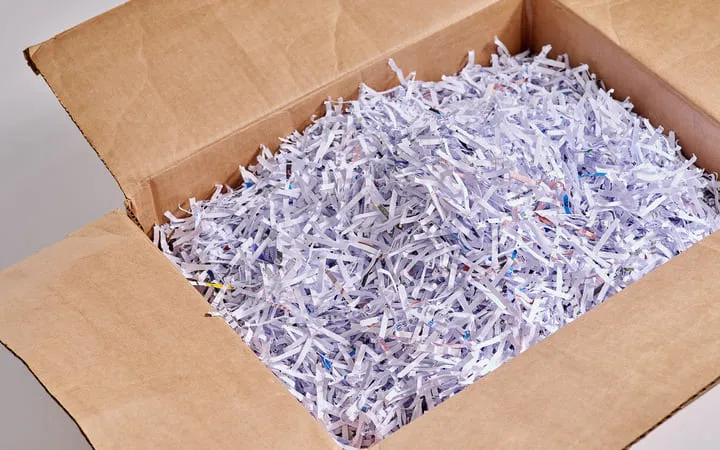
Packing aids are not only lightweight as gap fillers or filling material (especially important for shipping or shipping costs) but can also be procured and used very cost-effectively. In addition to paper, this also applies, for example, to shredded corrugated cardboard, wood wool, foam materials and plastic flakes.
Regardless of the preferred separator, it is important to ensure that it is appropriately certified and suitable. Many compartments are offered with ESD or VCI suitability.
Inlays of this type provide packaging service providers with a strong fixing aid for the packaged goods, which prevents the packaged goods from slipping or shifting. It is also ideal for securely separating packaged goods, such as components, individually packaged foodstuffs or several items in a product group.
At the same time, these packaging aids fulfil another task: with inlays for packaging, goods can be attractively presented to the consumer.
Packaging aids and sustainability
If you take the issues of sustainability and environmental friendliness seriously, you will ensure environmentally friendly packaging solutions in all respects. This means that every component used in a packaging solution should at best be 100 per cent environmentally friendly and sustainable. This also applies to the use and production of packaging aids.
In today's digital-modern and responsible society, the topics of sustainability, climate protection and environmental friendliness are very important.
Beware of deceptive packaging: organic plastics do not yet meet all requirements for environmental compatibility
However, not all materials and products for packaging aids can meet the requirements. Several cases are already known in which packaging declared to be particularly environmentally friendly was equipped with packaging aids that cannot be described as environmentally compatible and sustainably produced in terms of the material.

This concerns in particular certain types of plastic or conventional plastic. Although some companies are specifically focusing on bio-plastics, this is still far from providing the desired or expected boost for environmental compatibility.
This is because the new bio-plastics, which are made from renewable raw materials such as sugar cane, potatoes or maize, are for the most part merely bio-based products. However, this does not necessarily mean that the materials are compostable or biodegradable.
However, products whose materials do not originate from an actually environmentally friendly organic cultivation may also be described as bio-based. In addition, packaging aids or other components made from biodegradable raw materials may also declare themselves as "organic".
As a result, it can happen that a packaging aid made of bioplastics is used that was basically manufactured from a fossil raw material such as petroleum.
Sustainable solutions for packaging aids
For packaging materials as well, it is important to work as resource-efficiently as possible and opt for sustainable materials. Various void fill materials can be made from recyclable materials. There are now various alternatives to Styrofoam chips, such as those made from cornstarch. Packing paper, like kraft paper, is typically made entirely from recycled paper and can be reintroduced into the material cycle.
Another option is to design the packaging with an inlay made of cardboard or plastic. It also serves to fix the packaged goods and is a visually appealing solution.
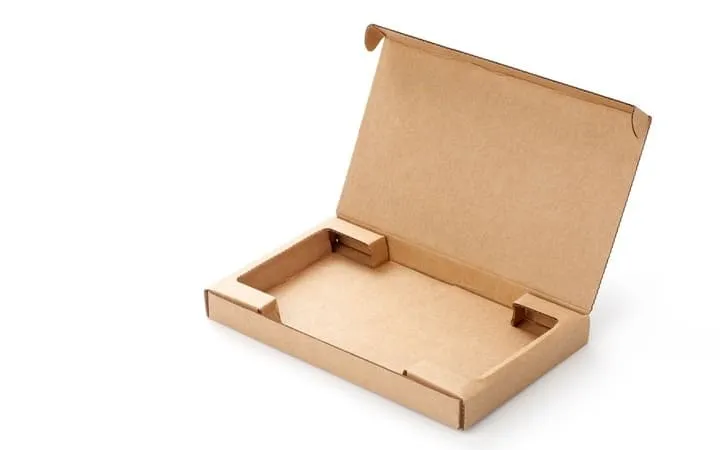
Packaging aids: next development steps towards sustainability
What is needed today are environmentally friendly packaging alternatives that also take into account the needs, demands and desires of consumers. A rigorous shift to less plastic packaging and components made of plastic is urgently needed.
Every year, 300 million tonnes of plastic are still produced. More than half of this plastic mass is even used only once. Often, the plastics used for packaging aids or for packaging in general end up in the oceans and in nature. New trends and, above all, the use of development potentials as well as a certain innovative spirit are a proven remedy for the entire packaging industry.

